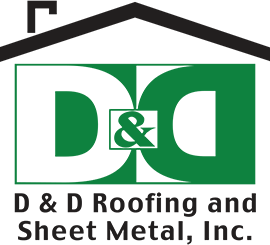Flat roofs are incredibly common in industrial buildings such as factories as well as multilevel residential and commercial buildings. This is because flat roofs are relatively easy to install and maintain, and they last for a considerably long time.
When your flat roof has reached the end of its life, the number of options regarding what you’ll need to do about it can be overwhelming. For starters, you’ll be asked if you want to extend the life of your current roof by applying roof coatings or carrying out other roof restoration processes, or if you want to replace it with new roofing instead. If you choose the second option, then you’ll have to consider the roof material you want to use. This is what this blog post will focus on.
Flat roof material is determined by suitability
Before we take a look at the best materials available for flat roofs, we must first say that roofing contractors will normally choose one on their clients’ behalf. Their choice will be based on its suitability for the particular roofing application. This is done on a case-to-case basis, though installers may occasionally pitch options to their clients. If you are offered choices, then it’ll be good to have a bit of roofing material knowledge so you can pick the right one.
There are many criteria that roofers consider when choosing a roofing material, but for the purpose of simplifying this task for non-experts, we’ll narrow it down to the most significant ones, namely life expectancy, material and installation costs, and primary benefits.
There are many criteria that roofers consider when choosing a roofing material, but for the purpose of simplifying this task for non-experts, we’ll narrow it down to the most significant ones, namely life expectancy, material and installation costs, and primary benefits.
Types of flat roof materials
Here are some of the best performing materials available for flat roofs:
Built-up roof (BUR)
BUR is one of the oldest and therefore among the most common roofing materials around the world. It consists of two to four alternating layers of hot-applied asphalt and bitumen-soaked reinforcing felt in the form of ply sheets. The sheets become impregnated with asphalt and form one massive roof membrane. The BUR is then finished with a top layer of aggregate such as slag, mineral granules, or gravel.
- Life expectancy: 15–30 years
- Material and installation costs: Tend to be more expensive due to having multiple layers and taking longer to install
- Primary benefits:
- High waterproofing and UV resistance
- High fire resistance due to aggregate top layer
Modified bitumen cap sheets
This is actually a class of roofing materials that were developed in the 1960s so that installing something close to BUR roofs could be done more feasibly in conditions that would make putting up a regular BUR roof too difficult or costly. Four subtypes of this class are defined by how they can be installed:
- Self-adhered
- Cold applied
- Hot applied
- Torch applied
Whatever their subtype, modified bitumen cap sheets come in rolls, are asphalt-based, and are reinforced with polymers that increase sheet flexibility and pliability in colder temperatures.
- Life expectancy: 10–15 years (surface is prone to blistering and cracking)
- Material and installation costs: Significantly lower than BUR and other advanced roofing types, which greatly offsets its shorter life span
- Primary benefits:
- High temperature fluctuation endurance
- Greatly reduces heat flow on roof surface, making it energy-efficient in terms of cooling costs
- Very difficult — and costly — to tear off, but very easy and inexpensive to restore
Metal roofing
Metal roofing comes in corrugated sheets that can be made with different steel blends. One popular type of blend incorporates aluminum, zinc, and silicon-coated steel; another is an iron-steel blend that is galvanized — i.e., coated with molten zinc to make it rust resistant.
Roofs made from metal sheets need to be installed at a greater pitch than other flat roofs. Instead of the usual 0.25” or 0.5” per foot slope, metal roofing needs to be installed at a slope of at least 2” per foot.
- Life expectancy: 20–100 years, the longest among roof materials
- Material and installation costs: The material and the specialized process required to install this type of roof makes this option the most expensive
- Primary benefits:
- High impermeability and durability
- Resists insect infestation
- Allows buildings to be more energy-efficient — be it summer or winter — when coupled with proper insulation
- Can be painted to improve appearance or coated with copper to improve corrosion resistance and protect structures against lightning
Single-layer membrane roof
This is another class of roofing materials borne of the latest roofing technologies. Usage of these materials is growing in popularity because unlike BURs and modified bitumen cap sheets, these are single-ply, making them very quick and easy to install.
They can come in TPO (thermoplastic polyolefin), PVC (polyvinyl chloride), and polyethylene sheets, but by far the most commonly used in both residential and commercial applications is a synthetic rubber compound called EPDM (ethylene propylene diene terpolymer).
TPO PVC EPDM Life expectancy 15 years due to how TPO loses water resistance, but applying a solution that restores water resistance can add 18 years to its life span 20 years The rubber membrane itself can last 20 years, but the seams that hold EPDM sheets together only last 12–15 years Material and installation costs Depends on how much pre-installation work needs to be done and how much insulation needs to be installed Pricey compared to most other single-layer membrane roofs Least expensive among single-ply roofs Primary benefits Gives the option to pick the type of insulation High fire resistance
White color reflects heat and UV rays, lowers cooling costs in warm climates
Most resistant to impact damage and cracking among single-ply roofs White color reflects heat and UV rays, lowers cooling costs in warm climates
High fire resistance Black color retains heat, reduces heating costs in cold climates (though white variants are also available)
Easier to maintain than most other roofing types
Spray polyurethane foam (SPF)
This is the least popular material on this list. However, it is effective at increasing a structure’s thermal resistance and enhancing its energy efficiency. This is not surprising, since SPF is simply insulation material that’s topped with a protective elastomeric coating.
Installing SPF roofs requires high technical skills and considerable experience, since installation windows for these are limited. Moreover, spraying too much foam in one area can cause issues such as poor roof integrity.
- Life expectancy: Up to 50 years with proper maintenance
- Material and installation costs: This is the midrange option among flat roof materials
- Primary benefits: Also increases the structural integrity of the building
Many home and commercial building owners across Nevada trust D&D Roofing to help them with all of their roofing needs. Call us — our experts are always ready to serve you.


